Instruction
Golf’s greatest drivers all do this…

It comes as no surprise that great drivers of the golf ball employ certain fundamentals that help them hit long, straight tee shots. In this article, I offer several fundamentals that, in my opinion, make these players better drivers of the golf ball than others.
Editor’s Note: Mentions of “left” and “right” reference right-handed golfers.
Alignment and balance
- Balance is an overlooked fundamental at address. Golfers should have their weight just over their shoelaces, which allows them to use their torso without losing their balance during the swing.
- At address, a golfer’s body should be aimed in a way that complements the desired club path — and that’s not always parallel left of the target line. Aiming slightly right or left of the target is OK in small doses.
- Remember, the direction of the shoulders at address influences the arms. Better drivers of the golf ball tend to error closed, not open.
Head slightly behind the ball
- Great drivers have the head positioned just behind the ball at address, giving them the ability to “load” at the top.
- This head position is great for golfers who tend to fight a reverse pivot.
Full turn to the top
- The shoulders need to make a big enough turn to the top so golfers can create maximum club head speed through the ball, but not so much that it causes a golfer’s hips to over-rotate and a loss of balance.
- A full turn has the shoulders and the left arm working together in harmony; too much left arm movement will cause the club to get too upright, and too much shoulder turn will cause the club to get too flat.
- The shoulders turn over the top of a solid foundation where the feet are firmly planted and accepting the full rotation of the upper body to the top.
Related: Should you make your backswing longer or shorter.
Inside delivery
- The most consistent drivers of the golf ball tend to swing into the ball from the inside (as shown by the blue line).
- We know that the starting direction of a golf ball begins mostly in the direction of the club face at impact, and its trajectory curves away from the path. Therefore, a golfer’s path must be to the right of the club face at impact so the ball will move right to left.
- Most players create more speed when the club is swung from the inside.
Related: How to fix your slice with path and face angle.
Right forearm on plane with club shaft
- When examining impact, the best drivers of the golf ball have their right forearm and club shaft inline with one another during impact.
- This inline condition helps the arms to provide the necessary support for the violent impact between club head and ball.
- Whenever the right arm is off-plane through impact, the club shaft has a much harder time moving in the player’s preferred direction.
Head behind at impact ball with the proper low point and angle of attack
- Having the head behind the ball at impact helps to move the low point behind the ball (2.9 inches for this player) giving this player a positive angle of attack with his driver (2.6 degrees up).
- Whenever these two conditions are met, it is easier to hit the proper part of the club face at impact, giving golfers the high launch (14.1 degrees) and low spin (1610 rpm) that helps them hit high, flat bombs that run when they land (notice this golfer’s 31.1 landing angle).
- Not having a low point behind the ball and a positive angle of attack is NOT necessarily a bad thing, but it does makes certain things harder to control at impact such as spin, height, impact point on the face, launch angle, landing angle and others.
- When the right shoulder is working from the inside, not only is a golfer’s delivery under control, but club head speed can also be maximized. This player had a swing direction of 7.0 degrees (right) and generated 110.4 mph of club head speed.
Related: What you need to know about low point
Face-to-path control
- Great drivers of the golf ball have a face-to-path relationship that is consistent and under control through impact.
- Curvature (with center impact) is created when the face angle and the club path diverge at impact. The photo above shows a golfer who has a has a low face-to-path ratio (0.7 degrees) giving him a low spin axis (5.9 degrees). That creates a very straight trajectory, and tee shots that are findable around the fairway.
- Remember, more loft means less spin axis tilt and straighter shots. Manage your spin loft and you will find more fairways.
Related: Four signs you need more loft on your driver.
Solid, balanced finish
- If golfers can hold their finish without falling over or wiggling around, that’s an indicator that they have made a decent golf swing.
- Balance is mainly controlled by the efficiency of a body’s pivot. If golfers have a poor pivot or poor sequencing, they usually have poor balance as well.
- The best drivers of the golf ball usually have great balance.
- LIKE155
- LEGIT19
- WOW11
- LOL6
- IDHT3
- FLOP8
- OB4
- SHANK55
Instruction
The Wedge Guy: The easiest-to-learn golf basic

My golf learning began with this simple fact – if you don’t have a fundamentally sound hold on the golf club, it is practically impossible for your body to execute a fundamentally sound golf swing. I’m still a big believer that the golf swing is much easier to execute if you begin with the proper hold on the club.
As you might imagine, I come into contact with hundreds of golfers of all skill levels. And it is very rare to see a good player with a bad hold on the golf club. There are some exceptions, for sure, but they are very few and very far between, and they typically have beat so many balls with their poor grip that they’ve found a way to work around it.
The reality of biophysics is that the body moves only in certain ways – and the particulars of the way you hold the golf club can totally prevent a sound swing motion that allows the club to release properly through the impact zone. The wonderful thing is that anyone can learn how to put a fundamentally sound hold on the golf club, and you can practice it anywhere your hands are not otherwise engaged, like watching TV or just sitting and relaxing.
Whether you prefer an overlap, interlock or full-finger (not baseball!) grip on the club, the same fundamentals apply. Here are the major grip faults I see most often, in the order of the frequency:
Mis-aligned hands
By this I mean that the palms of the two hands are not parallel to each other. Too many golfers have a weak left hand and strong right, or vice versa. The easiest way to learn how to hold the club with your palms aligned properly is to grip a plain wooden ruler or yardstick. It forces the hands to align properly and shows you how that feels. If you grip and re-grip a yardstick several times, then grip a club, you’ll see that the learning curve is almost immediate.
The position of the grip in the upper/left hand
I also observe many golfers who have the butt of the grip too far into the heel pad of the upper hand (the left hand for right-handed players). It’s amazing how much easier it is to release the club through the ball if even 1/4-1/2″ of the butt is beyond the left heel pad. Try this yourself to see what I mean. Swing the club freely with just your left hand and notice the difference in its release from when you hold it at the end of the grip, versus gripping down even a half inch.
To help you really understand how this works, go to the range and hit shots with your five-iron gripped down a full inch to make the club the same length as your seven-iron. You will probably see an amazing shot shape difference, and likely not see as much distance loss as you would expect.
Too much lower (right) hand on the club
It seems like almost all golfers of 8-10 handicap or higher have the club too far into the palm of the lower hand, because that feels “good” if you are trying to control the path of the clubhead to the ball. But the golf swing is not an effort to hit at the ball – it is a swing of the club. The proper hold on the club has the grip underneath the pad at the base of the fingers. This will likely feel “weak” to you — like you cannot control the club like that. EXACTLY. You should not be trying to control the club with your lower/master hand.
Gripping too tightly
Nearly all golfers hold the club too tightly, which tenses up the forearms and prevents a proper release of the club through impact. In order for the club to move back and through properly, you must feel that the club is controlled by the last three fingers of the upper hand, and the middle two fingers of the lower hand. If you engage your thumbs and forefingers in “holding” the club, the result will almost always be a grip that is too tight. Try this for yourself. Hold the club in your upper hand only, and squeeze firmly with just the last three fingers, with the forefinger and thumb off the club entirely. You have good control, but your forearms are not tense. Then begin to squeeze down with your thumb and forefinger and observe the tensing of the entire forearm. This is the way we are made, so the key to preventing tenseness in the arms is to hold the club very lightly with the “pinchers” — the thumbs and forefingers.
So, those are what I believe are the four fundamentals of a good grip. Anyone can learn them in their home or office very quickly. There is no easier way to improve your ball striking consistency and add distance than giving more attention to the way you hold the golf club.
More from the Wedge Guy
- The Wedge Guy: Golf mastery begins with your wedge game
- The Wedge Guy: Why golf is 20 times harder than brain surgery
- The Wedge Guy: Musings on the golf ball rollback
- LIKE85
- LEGIT13
- WOW5
- LOL1
- IDHT0
- FLOP4
- OB1
- SHANK8
Instruction
Clement: Stop ripping off your swing with this drill!

Not the dreaded headcover under the armpit drill! As if your body is defective and can’t function by itself! Have you seen how incredible the human machine is with all the incredible feats of agility all kinds of athletes are accomplishing? You think your body is so defective (the good Lord is laughing his head off at you) that it needs a headcover tucked under the armpit so you can swing like T-Rex?
- LIKE0
- LEGIT2
- WOW2
- LOL0
- IDHT0
- FLOP0
- OB0
- SHANK2
Instruction
How a towel can fix your golf swing

This is a classic drill that has been used for decades. However, the world of marketed training aids has grown so much during that time that this simple practice has been virtually forgotten. Because why teach people how to play golf using everyday items when you can create and sell a product that reinforces the same thing? Nevertheless, I am here to give you helpful advice without running to the nearest Edwin Watts or adding something to your Amazon cart.
For the “scoring clubs,” having a solid connection between the arms and body during the swing, especially through impact, is paramount to creating long-lasting consistency. And keeping that connection throughout the swing helps rotate the shoulders more to generate more power to help you hit it farther. So, how does this drill work, and what will your game benefit from it? Well, let’s get into it.
Setup
You can use this for basic chip shots up to complete swings. I use this with every club in my bag, up to a 9 or 8-iron. It’s natural to create incrementally more separation between the arms and body as you progress up the set. So doing this with a high iron or a wood is not recommended.
While you set up to hit a ball, simply tuck the towel underneath both armpits. The length of the towel will determine how tight it will be across your chest but don’t make it so loose that it gets in the way of your vision. After both sides are tucked, make some focused swings, keeping both arms firmly connected to the body during the backswing and follow through. (Note: It’s normal to lose connection on your lead arm during your finishing pose.) When you’re ready, put a ball in the way of those swings and get to work.

Get a Better Shoulder Turn
Many of us struggle to have proper shoulder rotation in our golf swing, especially during long layoffs. Making a swing that is all arms and no shoulders is a surefire way to have less control with wedges and less distance with full swings. Notice how I can get in a similar-looking position in both 60° wedge photos. However, one is weak and uncontrollable, while the other is strong and connected. One allows me to use my larger muscles to create my swing, and one doesn’t. The follow-through is another critical point where having a good connection, as well as solid shoulder rotation, is a must. This drill is great for those who tend to have a “chicken wing” form in their lead arm, which happens when it becomes separated from the body through impact.
In full swings, getting your shoulders to rotate in your golf swing is a great way to reinforce proper weight distribution. If your swing is all arms, it’s much harder to get your weight to naturally shift to the inside part of your trail foot in the backswing. Sure, you could make the mistake of “sliding” to get weight on your back foot, but that doesn’t fix the issue. You must turn into your trial leg to generate power. Additionally, look at the difference in separation between my hands and my head in the 8-iron examples. The green picture has more separation and has my hands lower. This will help me lessen my angle of attack and make it easier to hit the inside part of the golf ball, rather than the over-the-top move that the other picture produces.


Stay Better Connected in the Backswing
When you don’t keep everything in your upper body working as one, getting to a good spot at the top of your swing is very hard to do. It would take impeccable timing along with great hand-eye coordination to hit quality shots with any sort of regularity if the arms are working separately from the body.
Notice in the red pictures of both my 60-degree wedge and 8-iron how high my hands are and the fact you can clearly see my shoulder through the gap in my arms. That has happened because the right arm, just above my elbow, has become totally disconnected from my body. That separation causes me to lift my hands as well as lose some of the extension in my left arm. This has been corrected in the green pictures by using this drill to reinforce that connection. It will also make you focus on keeping the lead arm close to your body as well. Because the moment either one loses that relationship, the towel falls.


Conclusion
I have been diligent this year in finding a few drills that target some of the issues that plague my golf game; either by simply forgetting fundamental things or by coming to terms with the faults that have bitten me my whole career. I have found that having a few drills to fall back on to reinforce certain feelings helps me find my game a little easier, and the “towel drill” is most definitely one of them.
- LIKE12
- LEGIT2
- WOW2
- LOL0
- IDHT0
- FLOP2
- OB0
- SHANK8
-

 19th Hole6 days ago
19th Hole6 days agoDave Portnoy places monstrous outright bet for the 2024 Masters
-

 19th Hole2 weeks ago
19th Hole2 weeks agoThings got heated at the Houston Open between Tony Finau and Alejandro Tosti. Here’s why
-

 19th Hole1 week ago
19th Hole1 week agoTiger Woods arrives at 2024 Masters equipped with a putter that may surprise you
-

 19th Hole2 weeks ago
19th Hole2 weeks agoReport: Tiger Woods has ‘eliminated sex’ in preparation for the 2024 Masters
-

 19th Hole2 days ago
19th Hole2 days agoTwo star names reportedly blanked Jon Rahm all week at the Masters
-

 19th Hole1 day ago
19th Hole1 day agoNeal Shipley presser ends in awkward fashion after reporter claims Tiger handed him note on 8th fairway
-

 19th Hole2 weeks ago
19th Hole2 weeks agoAddiction, spinal fusion, and scam artists – Everything Anthony Kim revealed in candid interview with David Feherty
-

 19th Hole2 weeks ago
19th Hole2 weeks agoAnthony Kim says doctors told him that he ‘may not have much time left’ ahead of LIV return

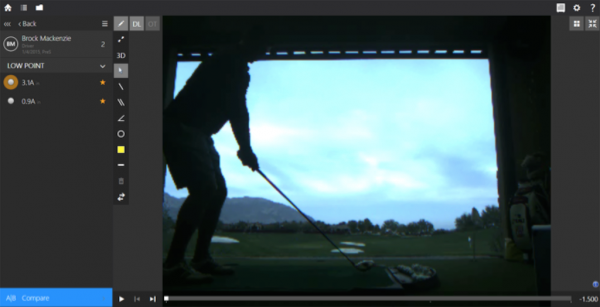
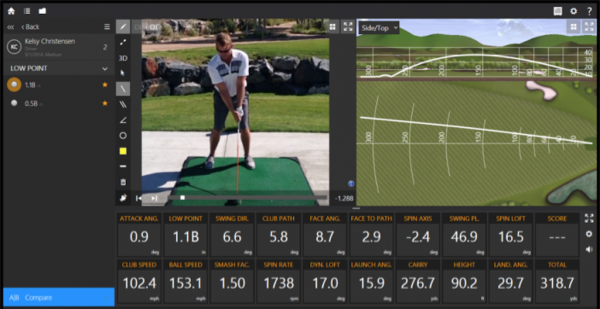
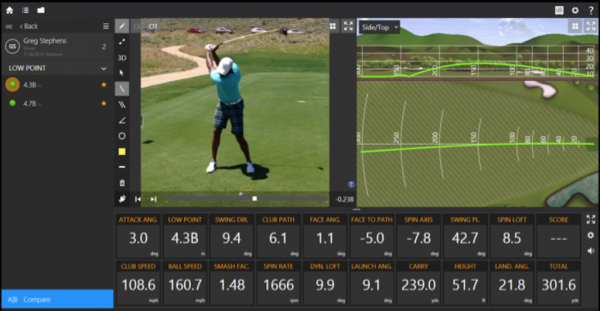
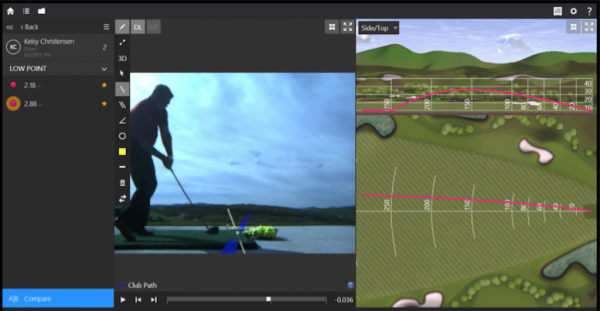
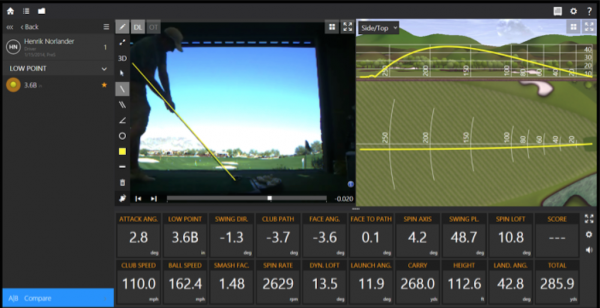
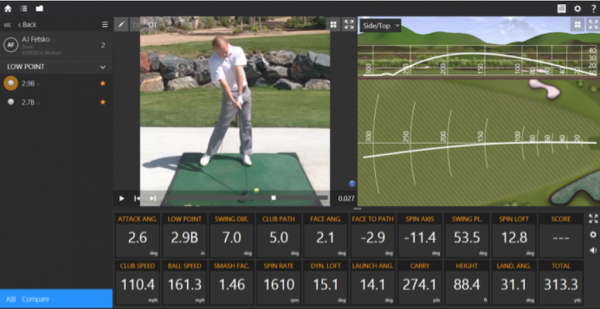
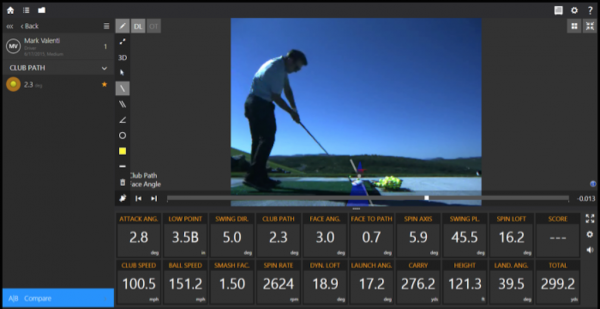
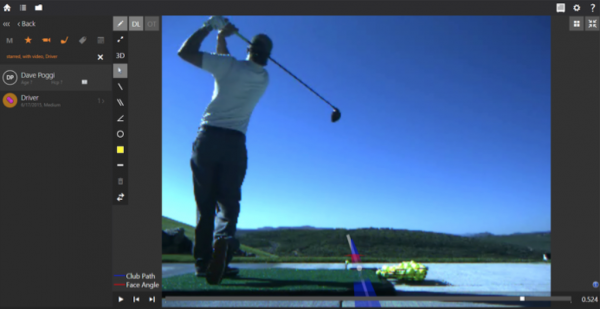

















JP K
Oct 8, 2015 at 5:33 am
Tom
I would lead the article with who your target audience is. In this case, slower swinging players <105 mph or so who need to find more fairways would really benefit. But, higher speed swings would result in a flip/rolling mess. It's not a question of hdcp nearly as much as it is target audience. With nearly 1/3 of the readers clicking "shank" while obviously the above could help a lot people tells me your too broad brushed.
AAdams
Oct 6, 2015 at 3:38 pm
balogne…. rubbish. most good ball strikers have a slight over the top movement with a slight inside to out path that exits immediately left as it should once the club has passed through the square zone. NONE of the greats flip or roll the club which is what an inside our path promotes. No great player lays off or drops inside or sling/ropes a hook out there. Sure a player like that wins occasionally but we are talking about GREATS/LEGENDS. Snead pull drew his ball. And arguably the best driver ever was CALVIN PEETE. Not a lot of inside out there at all! He square to left.
Take a word of advice from Bubba…. “if you can’t beat me,…….then you can’t teach me.”
JP K
Oct 8, 2015 at 5:22 am
The issue with this site is that they don’t tell you who the article is intended for. For a 105mph+ swing trying to scrape a shot off their handicap this will end your career. For a 90mph weekend warrior who wants to find more fairways, it’s quite helpful. The article shouldn’t say this is for high or low handicappers it should be quite precise (e.g. speed of swing, as well as hdcp). The above is fine for nearly every golfer just not me (or you). The problem is most people are not as knowledgeable as you (or me).
Jeff
Oct 6, 2015 at 5:11 am
How do you improve your alignment of the golf shaft and right arm? I am a 6-handicap golfer and my right forearm is well above the ball, and almos parallel to the ground. Mi believe this causes my swing to be a little shallow and susceptible to hooks.
Ben
Sep 27, 2015 at 8:17 am
“When examining impact, the best drivers of the golf ball have their right forearm and club shaft inline with one another during impact”
Do you mean left arm? Even in the photo below the statement, it is more the left arm that is in line, not the right. Please could you clarify?
JMcDonough
Sep 28, 2015 at 1:01 am
Check the picture again. You should be looking at a Down the Line View.
Up and out!
Sep 27, 2015 at 2:56 am
“The most consistent drivers of the golf ball tend to swing into the ball from the inside”
Well. Not necessarily true about the inside. With our modern, big headed drivers, it’s imperative that you get an upward motion into the hit to get maximum benefits for the dynamic loft you are attempting to attain. Therefore you’d be hard pressed to hit down on the ball from the outside on top of the ball (which is why most amateurs struggle with the big stick). You can’t be slapping down at it, so the “inside” move is how it ends up looking as you hit up on the ball at the same time that you are closing the tow (because if you don’t close the toe with that move, you’ll just bust out high pushes all day and a nice day in the trees).
Roger
Sep 27, 2015 at 2:48 am
Tom, thanks for another step by step to Perfect Impact !
Took me years to eventually by trial and error set up in a slightly closed stance and hit Great Shots….
other paul
Sep 27, 2015 at 12:45 am
Well done Tom. I’m pretty sure I agree with everything here. There are a few more things you could have added to the list but they are difficult to show on Trackman and so I understand why they are not included.
gvogel
Sep 26, 2015 at 8:50 pm
Remember when Tiger used to be a great driver of the ball?
other paul
Sep 30, 2015 at 9:26 pm
That was before I played golf, so no… ????
joe
Sep 26, 2015 at 5:29 pm
Interesting numbers with your students….2nd guys driver rolled 62 yards? with 1600 spin…he needs softer shaft lol
shimmy
Sep 26, 2015 at 3:17 pm
It’s funny how the (arguably) best current driver of the ball- Bubba- breaks so many of these principles.
Large chris
Sep 26, 2015 at 4:20 pm
Not really… He’s ranked 156th in driving accuracy and 46th in total driving…
larrybud
Oct 1, 2015 at 12:03 pm
“Total driving” is a completely meaningless stat.
Brian
Sep 26, 2015 at 4:39 pm
Longest? Most fun? Maybe. Best – no.
M
Sep 28, 2015 at 11:54 am
Strokes gained driving Bubba is #1 for 2015 .. therefore he is the best
Michael
Sep 26, 2015 at 2:02 pm
Pretty straightforward ????
other paul
Sep 27, 2015 at 12:43 am
Yeah it is. Nothing to difficult here. Heard it all before.